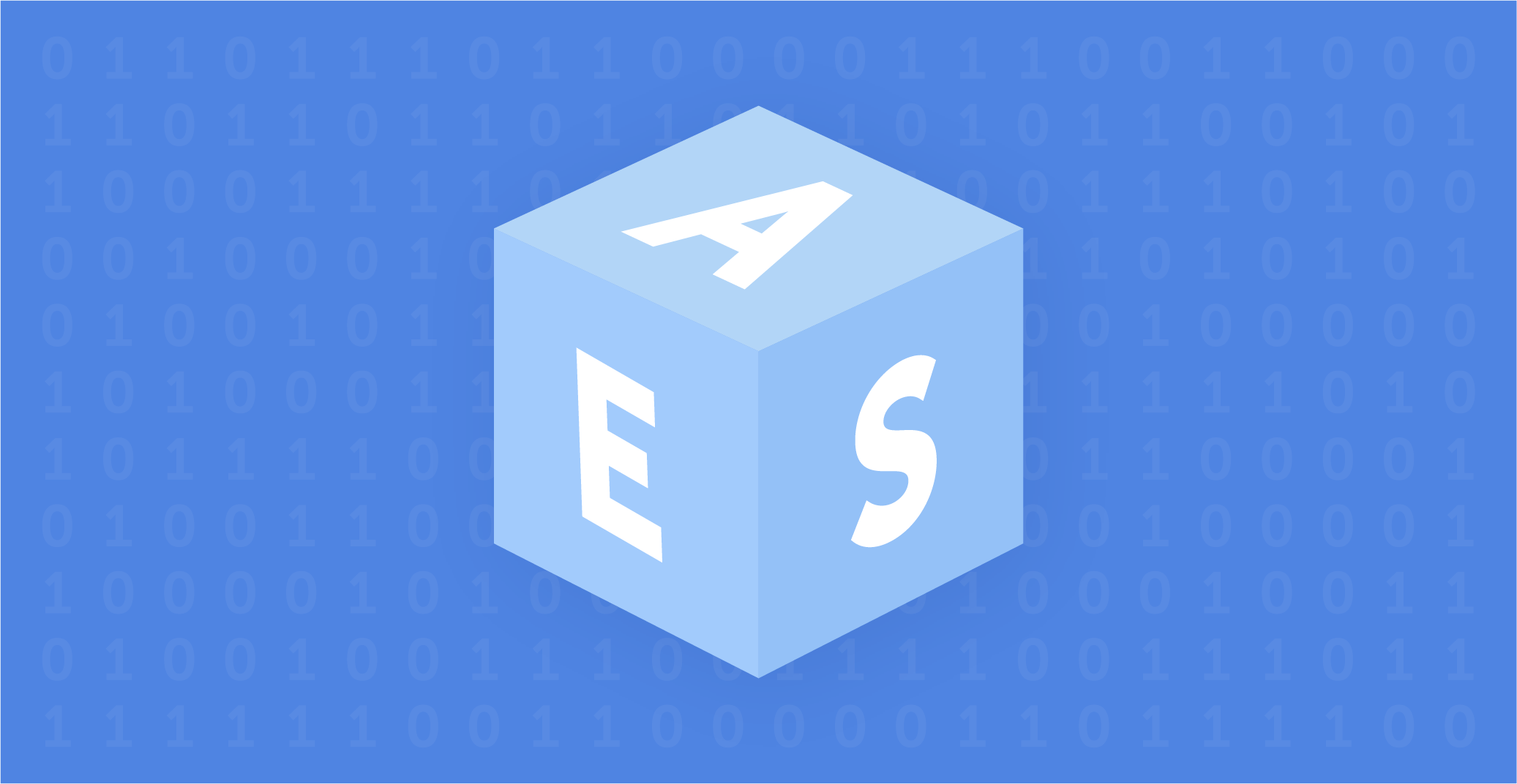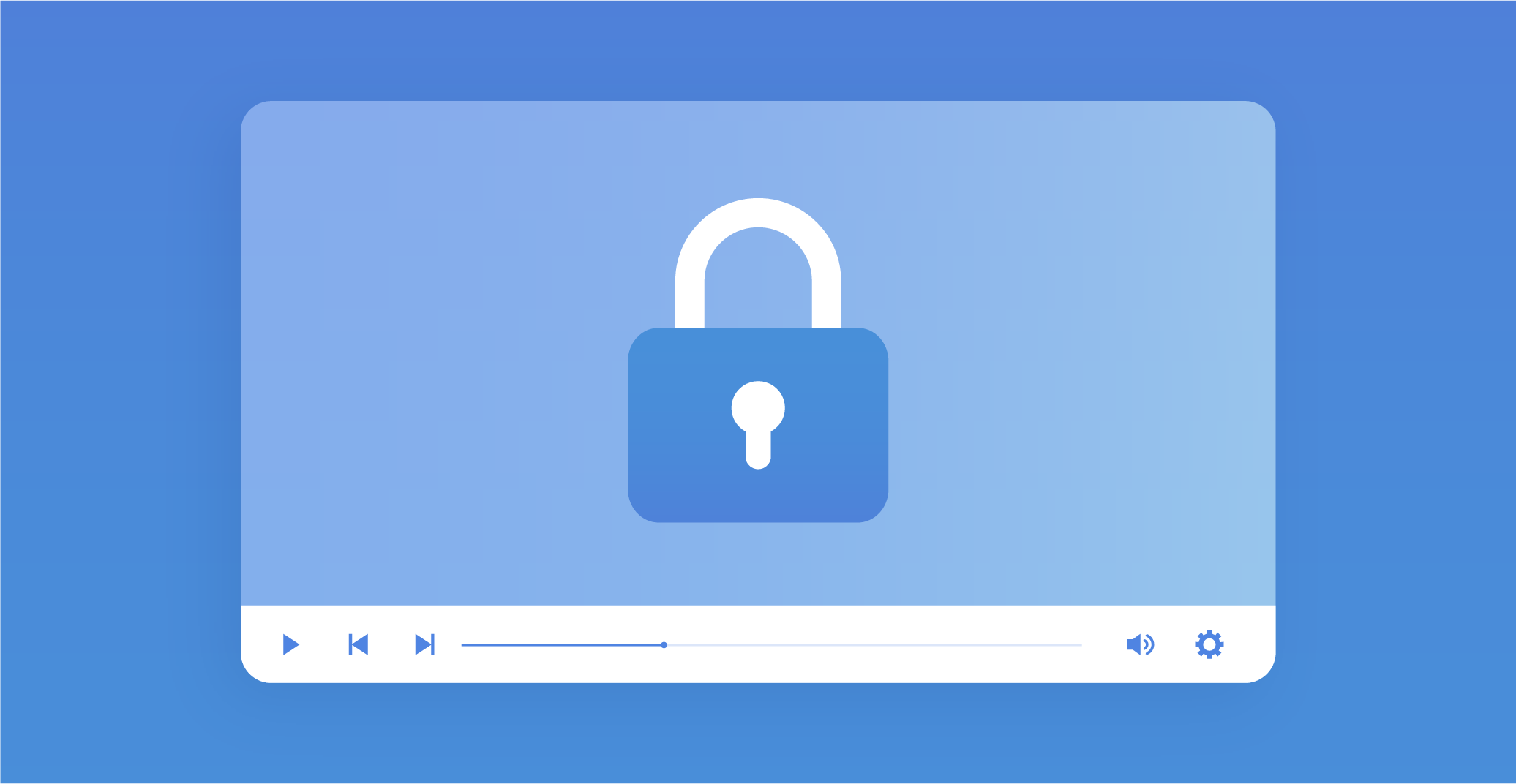
Table of contents
- What is the Advanced Encryption Standard (AES)?
- Where is AES encryption used?
- How AES encryption works
- Advantages of AES encryption
- Attacks on AES encryption
- How to prevent attacks on AES encryption
- How does AES compare to other encryption?
- How Passwork can help with encryption
What is the Advanced Encryption Standard (AES)?
The Advanced Encryption Standard (AES) is a method used to convert plain text into unintelligible code. This encrypted data can only be accessed by those who possess the proper key.
The United States government formally made AES its encryption standard during 2001. National Institute of Standards and Technology (NIST) selected AES to replace the outdated DES encryption system after conducting its evaluation. It is currently among the most dependable approaches for securing digital information.
What is unique about AES? It is quick, safe, and adaptable. 128, 192, or 256-bit keys may be used with it. The protection increases with the length of the key. But even the 128-bit version is considered very secure.
AES uses a symmetric encryption method. That means the same key is used to lock and unlock the data. Both sides must have the same key to communicate safely.
Governments, banks, and tech companies use AES every day. It guards emails, passwords, files, and even voice calls.
Where is AES encryption used?
AES encryption works discreetly behind the scenes, protecting your data every day. It keeps logins, online banking, Wi-Fi, and cloud storage. Mobile applications, communication tools like WhatsApp and Zoom, and cloud systems like Google Drive depend on AES. It’s embedded into USBs, SSDs, and cellphones to lock down data. Even if your gadget goes lost, AES keeps data protected. Businesses use it to preserve client details, emails, and personnel records. Governments trust AES too, making it important for securing sensitive data across both personal and professional contexts.

How AES encryption works?
AES scrambles your data via a technique called substitution and permutation. It might sound complex, but let’s break it down.
AES separates the data into generally 128-bit long small blocks. It then sends each block through a sequence of steps called rounds. The number of rounds depends on the key size:
- 10 rounds for 128-bit
- 12 rounds for 192-bit
- 14 rounds for 256-bit
Each round updates the data using mathematical operations. It mixes stuff up, substitutes bits, and changes components around. The key guides this entire process — without the appropriate key, the result appears like random garbage.
This is where AES excels. The same procedure is used to encrypt and decrypt. You simply reverse the steps using the same key.
Because it employs a block scheme, AES operates rapidly. It’s also less likely to break down if a tiny element is modified or lost. That’s why it’s perfect for huge files and streaming.
To put it simply, AES transforms your communication into a puzzle. Without the key, the components won’t fit.
Advantages of AES encryption
Globally, AES encryption is trustworthy, rapid, and strong. It’s one of the most secure methods for protecting information, which is why banks, governments, and major tech companies use it every day.
One major win? Speed. AES operates quickly on both small and large files. It runs nicely even on minimal hardware. That means it won’t slow things down — even while encrypting huge amount of data.
Security is another significant advantage. AES employs complicated keys and several rounds to scramble information. Hackers can’t break it without huge computational power. And even then, it would take thousands of years.
Flexibility matters too. AES offers three basic key lengths: 128, 192, and 256 bits. You can choose the degree of security suited for your scenario — longer keys give greater protection.
It’s also extensively embraced. Since it’s a worldwide standard, most tools and platforms support it. That makes integration simpler. You don’t need to develop anything from the start.
Plus, AES is efficient. It requires less system resources than some previous approaches. That saves power on mobile devices and keeps systems working smoothly.
Attacks on AES encryption
AES is challenging to penetrate. Still, attackers continuously attempt new techniques. Instead of breaking the math behind AES itself, they usually target the systems that use it.
One such way is side-channel assaults. These don’t touch the algorithm itself. Instead, they monitor how it operates. Think power utilization, timing, or electromagnetic leakage. It's like eavesdropping on someone inputting a password, not breaching the lock.
Another option is the brute force assault. This requires testing every key until one fits. For AES-128, that’s 2¹²⁸ combinations. It’s an extremely large number—just to give you an idea, it’s much more than the number of atoms in the observable universe. Even the fastest computers would require billions of years. Simply, it’s just not practical.
Some go target weak passwords instead. AES may be strong, but a lousy password may shatter everything. It’s like putting a cheap lock on a bank vault.
Then there’s the related-key assault. It’s unusual and only works if attackers know specific details about the keys. With effective key management, this attack is virtually worthless.
Sometimes, hackers utilize key recovery attacks. They attempt to find out the encryption key by examining trends or flaws in how data is handled.
These assaults don’t indicate AES is weak; they merely illustrate that security isn’t about one single component. It's about the complete picture. The configuration, the keys, the users — each plays a crucial role.

How to prevent attacks on AES encryption
Even the toughest lock requires a clever owner. AES is strong, but wise usage makes it secure.
First, use strong, unique passwords. Don’t reuse them. Don’t make them simple. A good encryption system with a weak password is like closing your door and putting the key under the mat.
Next, safeguard your keys. Don’t store them with your data. That’s like placing your combination lock and the code in the same drawer. Use separate, trustworthy key management tools.
Keep your software updated. Old systems may contain faults or weaknesses that attackers already know. Patches heal the flaws. Skipping updates gives hackers a head start.
Watch out for side-channel leakage. If attackers can read power utilization or timing, they may put things together. Devices processing AES should have protection against these signals.
Don’t forget access control. The castle's keys are not necessary for everyone. Limit who can see or utilize sensitive data.
Also, avoid copy-paste security configurations. What works for one system may not suit yours. Understand your requirements, then pick the proper settings.
How does AES compare to other encryption?
AES stands tall in the encryption world. But how does it compare to others like RSA and DES?
First off, AES is symmetric. That means the same key is used to lock and unlock data. It's fast and works great when both parties already know the key. RSA, on the other hand, is asymmetric. It uses a pair of keys: one public, one private. It's slower but better for situations where users don’t share a key ahead of time like email encryption.
Now, DES used to be the big boss. But it's way too weak now. Hackers can crack it in hours, maybe less. AES replaced it because it’s faster, safer, and designed to last.
What makes AES shine is its balance, strong security, quick processing, and wide use. It runs smooth on most devices and doesn’t eat up system power like RSA. That’s why it’s popular in banking, Wi-Fi, and cloud apps.
RSA still has a place, especially for secure key exchanges. But once the keys are shared, AES usually takes over.
Using RSA acts like a bodyguard giving you the key to access a protected space implemented through AES encryption.
AES provides greater encryption security than original encryption systems such as Blowfish and Twofish. Users benefit from its global-wide tested, trusted, and authorized security approval.
AES-128 vs. AES-256
AES encryption includes three key variations which are explained through 128, 192 and 256-bit measurement systems. AES-128 and AES-256 represent the primary opposition group of encryption standards. AES-128 employs a 128-bit key. AES-256 uses a 256-bit key.
Simple, right? The key length directly affects the strength of the encryption, which is what distinguishes these two variations. Taking longer key lengths enables hackers to face increased difficulty when trying to predict potential combinations. AES-256 offers a key selection capacity 2¹²⁸ times greater than AES-128 does. That’s not just bigger, that's gigantic.
But here’s the twist. AES-128 is still quite secure. Experts have yet to break the code, even with the power of supercomputers attempting to crack it. The algorithm runs quickly and consumes minimal power, making it ideal for mobile devices and real-time applications.
AES-256 gives further levels of safety. The encryption shows resistance to force-based attacks while delivering maximum protection against complex threats. Government and military organizations implement AES-256 because the extra security level exceeds their requirements.
So, which one should you use? Consider AES-256 as your protection choice if you need the highest level of encryption security. AES-128 provides sufficient protection to secure most typical applications when one considers both speed and security performance. Deciding between armed tank protection and bulletproof vehicles represents the choice between AES-256 and AES-128 cryptographic protocols. Both protect you. One is simply more robust.
Bottom line? AES-128 is quick and powerful. At the same time AES-256 provides maximum strength yet operates at slightly reduced speed. The selection should rest on your specific needs regardless of any exaggerated claims.
AES vs. RSA
AES and RSA both provide strong data protection, but they operate in fundamentally different ways.
AES is symmetric encryption — fast, efficient, and perfect for large files or real-time communication.
RSA is asymmetric. This cryptographic system requires two specific keys where one remains public for encryption purposes and the second remains private for decryption functions. People can provide encrypted content like putting letters in a mailbox yet only the mailbox owner possesses the required key for decryption.
AES encryption operates at speeds much higher than those of RSA encryption. The majority of systems first use RSA to distribute the AES key before they transition to AES operations. The system works similar to RSA which opens the door before AES handles all the cleaning operations within.
RSA is ideal for secure key exchange, especially over open networks like the internet. But it's slow for large data. Very slow.
AES shines when speed matters. It’s built for bulk encryption files, hard drives, apps, you name it.
So, which is better? Neither. They do different jobs. In fact, most secure systems use both together. RSA to safely share the AES key. AES to encrypt the actual data.
AES vs. DES
AES and DES are both encryption standards, but they’re not on the same level. DES came first. It was developed in the 1970s. Back then, it was a big deal. It protected sensitive data for decades. But times changed. Hackers got smarter. Computers got faster. And DES started to fall apart.
DES uses a 56-bit key. That sounds fine until you realize how easy that is to crack today. A regular desktop computer can break DES in hours. A powerful system? Minutes. That’s not good enough anymore.
AES came in to fix that. It uses key widths of 128, 192, or 256 bits. That’s a massive upgrade. AES isn’t just harder to break, it's practically impossible with today’s tools. That’s why banks, the military, and even WhatsApp trust AES.
There’s also speed. DES works with 64-bit blocks, while AES handles 128-bit blocks. AES encrypts more data at once and does it faster. DES feels like a typewriter in a world of smartphones.
In simple terms: DES is outdated. It’s like using a flip phone when you could have a secure smartphone. AES isn’t just better. It’s safer, smarter, and future-proof. If you care about security, there’s no real debate.

AES encryption FAQ
Is AES symmetric or asymmetric?
AES is a symmetric encryption algorithm. The encryption process utilizes a single key which performs the decryption operation as well. The system functions by utilizing a solitary key both for encryption and decryption processes. The system enables rapid execution for encrypting files and networks alongside message protection since it depends on existing shared keys between users. Symmetric systems like AES are usually faster than asymmetric ones, but the trick is safely sharing that key. If someone steals the key, they get access. That’s why key management is super important with AES.
What is AES 128 vs. 192 vs. 256?
The key sizes measured in bits include numbers ranging from 128 to 192 and 256. Extended keys become harder to break. AES-128 is already extremely secure. Higher security levels come from AES-192 and AES-256 — yet they operate at a slightly reduced speed. A majority of systems choose AES-256 because of its exceptional security features. The padlock analogy applies where AES-128 represents strong security while AES-256 functions at Fort Knox level of protection. Each AES version maintains a constant block size of 128 bits alongside unchanged basic building components while adding additional rounds of complexity through larger key lengths.
Is 128-Bit AES secure?
Yes, AES-128 is very secure even by today’s standards. It would take billions of years to brute-force with current tech. While some organizations prefer AES-256 for extra strength, AES-128 has never been broken. It’s still widely used in apps, websites, and devices. Unless someone invents a quantum computer that works like magic, AES-128 isn’t going anywhere. It’s fast, reliable, and strong enough for almost any purpose.
Is AES the best encryption method?
For most uses? Yes. AES is the gold standard. It’s trusted by governments, banks, and tech companies worldwide. It’s fast, secure, and flexible. That’s hard to beat. It’s not perfect for everything, though. For secure email or digital signatures, asymmetric methods like RSA work better. But for locking down files, networks, or apps? AES takes the crown. It’s been tested, approved, and trusted for over two decades and still going strong.
How Passwork can help with encryption
Keeping passwords safe is tough. You probably have dozens, maybe even hundreds of them. And when they’re scattered across random locations, it’s a disaster waiting to happen.
That’s where Passwork comes in. A password vault is a secure storage system that protects your sensitive information in one safe location. AES-256 encryption secures everything, using the same standard trusted by banks and governments. So, yeah, it’s solid.
But Passwork doesn’t stop at security. It also makes your life easier. You don’t need to memorize every login. Just store it once, and boom it's always there when you need it. Need to share passwords with your team? You can do that safely without sending anything over chat or email. No more “What’s the Wi-Fi password again?” moments.
Passwork also puts you in control. You decide who gets access, when, and to what. You can see logs of who accessed what and when. Plus, you can view logs showing who accessed what and when. It’s peace of mind for IT admins and managers.
And let’s not forget backups. Passwork keeps your data synced and safe. If something goes wrong, you’re not stuck. Your passwords are still locked down and ready to go.
Further reading:







